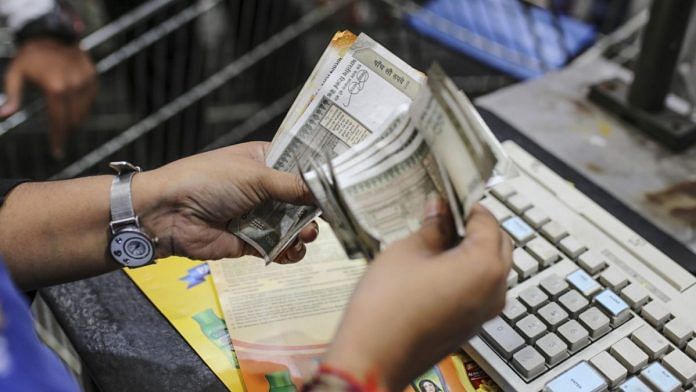There are no takers in India for corporate notes with even a whiff of credit risk. But such is the fear among global investors around China’s overleveraged property developers that money can’t stop pouring into Indian high-yield dollar bonds.
Domestic debt issuances by all except the top-rated borrowers have shrunk since the collapse of the IL&FS Group, a major infrastructure financier, in September 2018. Firms rated below AA have managed to garner just Rs 382 billion ($5.2 billion) this year, a far cry from their 2017 haul of Rs 2.1 trillion.
The situation in the international market is the exact opposite. Junk-rated nonfinancial firms from India have scooped up a record $9 billion this year, almost three times the year-earlier period. JSW Steel Ltd. alone raised $1 billon last month. Tycoon Gautam Adani has pipped even historically trusted public-sector issuers, such as Power Finance Corp. and Export-Import Bank of India. Firms linked to Asia’s second-richest man have raised $9 billion in the past five years, more than any other Indian borrower.
For investors wary of China, looking at India makes sense. At more than $300 billion, China Evergrande Group’s liabilities alone are more than twice the size of India’s entire corporate bond market. While nobody knows which sector or private business in the People’s Republic will get punished next by Xi Jinping’s “common prosperity” campaign, overseas investors have a fair idea which Indian corporate groups have a good relationship with Prime Minister Narendra Modi’s government.
Still, policy makers in New Delhi and Mumbai would prefer fund-raising to take place locally, in their home currency. After all, they’re running a fully stocked liquidity bar, with the surplus in the banking system ranging between $90 billion and $130 billion since end-June. It’s a risky ploy. With the Federal Reserve close to reining in generous monetary support for the pandemic-hit U.S. economy, India’s happy hours can’t go on indefinitely. To boost anemic investment and jobs, the authorities want credit to perk up. But how long can they wait when easy money is only going into overpriced equities? Leaving aside the local bond market, even bank lending to the corporate sector is refusing to budge.
The central bank can point to 5.3% inflation, within its target range, to postpone the inevitable tightening in its monetary-policy meeting today. Granted, soaring global oil prices will bring discomfort to a country that imports most of its energy. An acute coal shortage at power plants may push inflation higher as steelmakers pay more for the commodity. It may also add to the record September trade deficit of nearly $23 billion. The reassuring news is that India isn’t living hand to mouth, having nearly $650 billion in foreign-exchange reserves, and an overall balance-of-payments that HSBC Holdings Plc expects to remain in surplus for years. Knowing they’re unlikely to lose money from a sudden rupee depreciation, foreigners may keep coming for India’s stocks and bonds.
But the extra dollars arrive with a cost. A rupee that’s too strong compared with trading partners’ inflation-adjusted currencies leads to a loss of competitiveness. That’s probably what’s going on in India. “In a version of the Dutch disease, an overvalued rupee could impede growth in domestic manufacturing and jobs,” says Observatory Group analyst Ananth Narayan.
Surging gold imports often signal nervousness. Some of the heightened demand can be attributed to jewelers. With the virus in retreat, they’re stocking up for the Hindu festive season, which has just begun. But could it also be that having made their money in stocks, rich Indians are buying the yellow metal and Bitcoin because they know that the ultimate source of demand in the economy is weak, and that the currency is artificially high?
As long as the rupee doesn’t roll over, India will get some of the capital fleeing China. But love in the time of Evergrande isn’t forever. The local credit market needs to turn a little less grumpy. Once the Fed starts tapering its balance sheet, the moment may be lost.- Bloomberg
Also read: ‘Buy now, pay later’ can sustain more than just rich lifestyles in India



